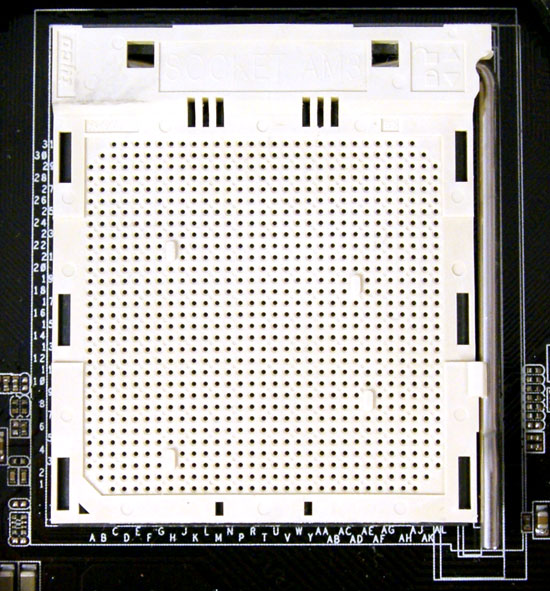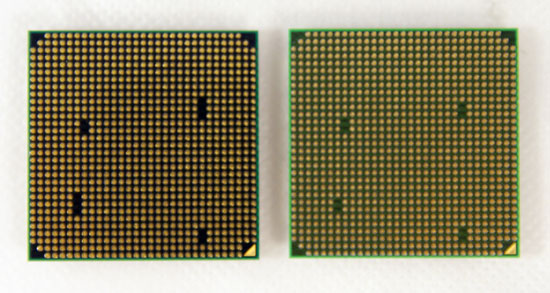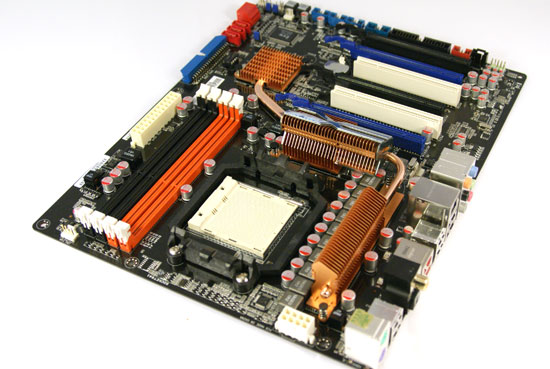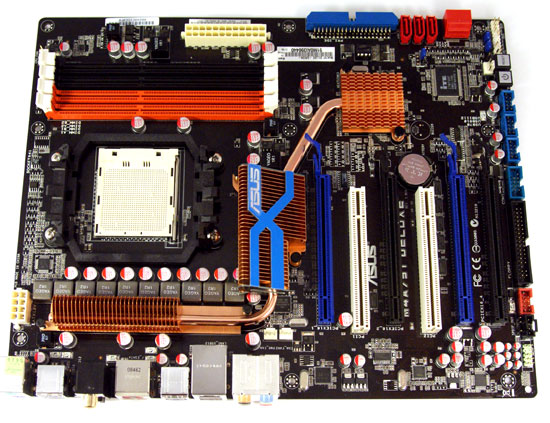The Phenom II X4 810 & X3 720: AMD Gets DDR3 But Doesn't Need It
by Anand Lal Shimpi on February 9, 2009 12:00 AM EST- Posted in
- CPUs
Lower TDPs, Faster un-core, DDR3 Support: The new Phenom II
All of the CPUs launching today are Socket-AM3 compatible. If you remember from my original Phenom II article, a Socket-AM3 CPU can work in both AM3 and AM2+ motherboards. I made a cute little compatibility matrix for you guys:
| CPU/Motherboard | Socket-AM2 MB | Socket-AM2+ MB | Socket-AM3 MB |
| Socket-AM2 CPU | Yes | Yes | No |
| Socket-AM2+ CPU | Maybe | Yes | No |
| Socket-AM3 CPU | Maybe | Yes | Yes |
AMD carefully engineered its AM3 memory controller allowing it to operate in both DDR2 and DDR3 modes. Any AM3 CPU can thus work in either a Socket-AM3 motherboard with DDR3 memory, or in a Socket-AM2+ motherboard with DDR2 memory. Backwards compatibility with original Socket-AM2 motherboards is up to the motherboard vendor, AMD does not validate any AM3 CPUs in regular AM2 motherboards.

The new Socket-AM3. Socket-AM2/AM2+ CPUs won't fit in here. But AM3 CPUs will fit in AM2+ boards.
All of the Socket-AM3 Phenom II CPUs are 95W TDP parts, compared to 125W for the first two chips that launched in January. The other notable change is that all of the AM3 CPUs run their un-core (North Bridge + L3 cache) at 2.0GHz instead of 1.8GHz like the AM2+ Phenom II processors.
Socket-AM3 Motherboards: Don't Bother Yet
I've had a Socket-AM3 motherboard here for a while but honestly the performance just isn't worth it. While it's taken a while to get stability up to par with AM2+, overall system performance remains unaffected. The Socket-AM2+ to Socket-AM3 transition looks a lot like the Socket-939 to Socket-AM2 transition we saw back in 2006.

A Socket-AM3 CPU (left) vs. a Socket-AM2 CPU (right) Note the missing pins on the AM3 chip.
Thankfully AMD gives you the option to ugprade whenever you'd like. You can buy a Socket-AM3 CPU today and use it in either an AM2+ board or an AM3 board, provided there's proper BIOS support. DDR3 memory is still more expensive than DDR2 and offers no real world performance advantage even at DDR3-1333 speeds.


Note that Socket-AM3 CPUs will only officially support one DIMM per channel running at 1333MHz. You'll need to run at 1066MHz speeds if you're running four DIMMs. When DDR2 and DDR3 memory reach price parity at the end of this year, AMD will be in a good position to make the transition. But if you're buying today, find a good AM2+ board and some cheap DDR2 memory.
The Test
| Motherboard: | Intel DX58SO (Intel X58) Intel DX48BT2 (Intel X48) MSI DKA790GX Platinum (AMD 790GX) |
| Chipset: | Intel X48 Intel X58 AMD 790GX |
| Chipset Drivers: | Intel 9.1.1.1010 (Intel) AMD Catalyst 8.12 |
| Hard Disk: | Intel X25-M SSD (80GB) |
| Memory: | G.Skill DDR2-800 2 x 2GB (4-4-4-12) G.Skill DDR2-1066 2 x 2GB (5-5-5-15) Qimonda DDR3-1066 4 x 1GB (7-7-7-20) |
| Video Card: | eVGA GeForce GTX 280 |
| Video Drivers: | NVIDIA ForceWare 180.43 (Vista64) NVIDIA ForceWare 178.24 (Vista32) |
| Desktop Resolution: | 1920 x 1200 |
| OS: | Windows Vista Ultimate 32-bit (for SYSMark) Windows Vista Ultimate 64-bit |










77 Comments
View All Comments
zagortenay - Wednesday, February 11, 2009 - link
When you click that Intel logo on the left hand side, Anandtech becomes an Intel site. Only a fool beleives Anandtech is promoting Intel for free and I beleive the cunning Intel gets what she pays for.Hey Anand this is not acceptable! Hey Anand do you hear me!
swaaye - Thursday, February 12, 2009 - link
I've always thought Anand was more of an AMD guy, going by how he names his AMD and ATI reviews. :)swaaye - Tuesday, February 10, 2009 - link
Phenom doesn't really need much bandwidth to do its thing for most applications.http://ixbtlabs.com/articles3/cpu/amd-phenom-x4-98...">http://ixbtlabs.com/articles3/cpu/amd-phenom-x4-98...
starx5 - Tuesday, February 10, 2009 - link
I can see intel logo on the 1eft of this site.You must independent from intel's hand.
I know Core i7 is totally jerk in gaming.
starx5 - Tuesday, February 10, 2009 - link
I think anandtech is intel's doll.refer to this reviews
http://www.overclockersclub.com/reviews/phenomii_7...">http://www.overclockersclub.com/reviews/phenomii_7...
http://www.tomshardware.com/reviews/socket-am3-phe...">http://www.tomshardware.com/reviews/socket-am3-phe...
http://www.guru3d.com/article/amd-phenom-ii-x4-810...">http://www.guru3d.com/article/amd-phenom-ii-x4-810...
http://www.guru3d.com/article/amd-phenom-ii-x4-920...">http://www.guru3d.com/article/amd-phenom-ii-x4-920...
Core i7 is absolutely a gaming failer!!
goinginstyle - Friday, February 13, 2009 - link
I think it is more of a case of those sites listed being an utter failure at proper benchmarking.jchan2 - Tuesday, February 10, 2009 - link
Interesting.... I wonder whats up with that?7Enigma - Wednesday, February 11, 2009 - link
They also kind of contradict their own article later on saying:"Benchmark note:
We moved towards a new 64-bit environment for all our test. This entailed new software updates for our benchmarks plus we replaced a lot of our tests with different software. This means that if you compare the results published in this review with other processor reviews from Guru3D.com, the numbers might not add anymore up due to different software and tests."
So unless they reran an Intel system using 64-bit software I don't know where the data came from for the i7 and E8400 platforms?
7Enigma - Wednesday, February 11, 2009 - link
Possibly even more weird in the Guru3D article is the test system only had 2 gigs of ram?!? That just seems crazy even with Vista 32-bit. You can easily get some system oddness. I mean heck, 4gig should be the MINIMUM in a review of new hardware. I can't tell if that would help or hurt, but it should definitely add another layer of complexity to figuring out what means what in this article.7Enigma - Wednesday, February 11, 2009 - link
Seems like (in the OC'ers club review) they were GPU limited or at least entering the compression range in the majority of circumstances. They used a GTX 260 (216) which is definitely a bit underpowered for the latest generation of CPU's. Most of their graphics settings are too high once they get above 1024X768 to see a large difference in frame rates. Yes you can say they are still all playable, but it makes seeing the actual power of the CPU less important.Guru3d article again is weird. The biggest problem I see here is what the test setup is for the Intel i7 system? I skimmed the article (it's huge), but never could find it. As for the testing again heavily GPU-limited over about 1280X1024 (and in some cases literally right off the bat at 1024X768). Once they hit 1600X1200 with the single 280 the cpu's have just stalled waiting for the GPU. This still doesn't explain the Crysis: Warhead numbers which show the i7 LOWER than the AMD cpu's @ 1600X1200. My guess is the percent error in the testing is large and so pretty much anything within 5% is equal (again denoting the GPU-bottleneck).
I won't comment on Tom's as that site has lost all respect with me.
But we've all known that gaming performance with the latest (or even previous generation CPU's) when not also using CF/SLI or stupidly low resolutions DOES NOT make a huge difference with most games (some RTS/FlightSim/FarCry2/etc. excluded). decided to try that way back with Conroe to show how it wasn't so great for gaming (testing everything under completely GPU-limited scenarios).
This isn't news.